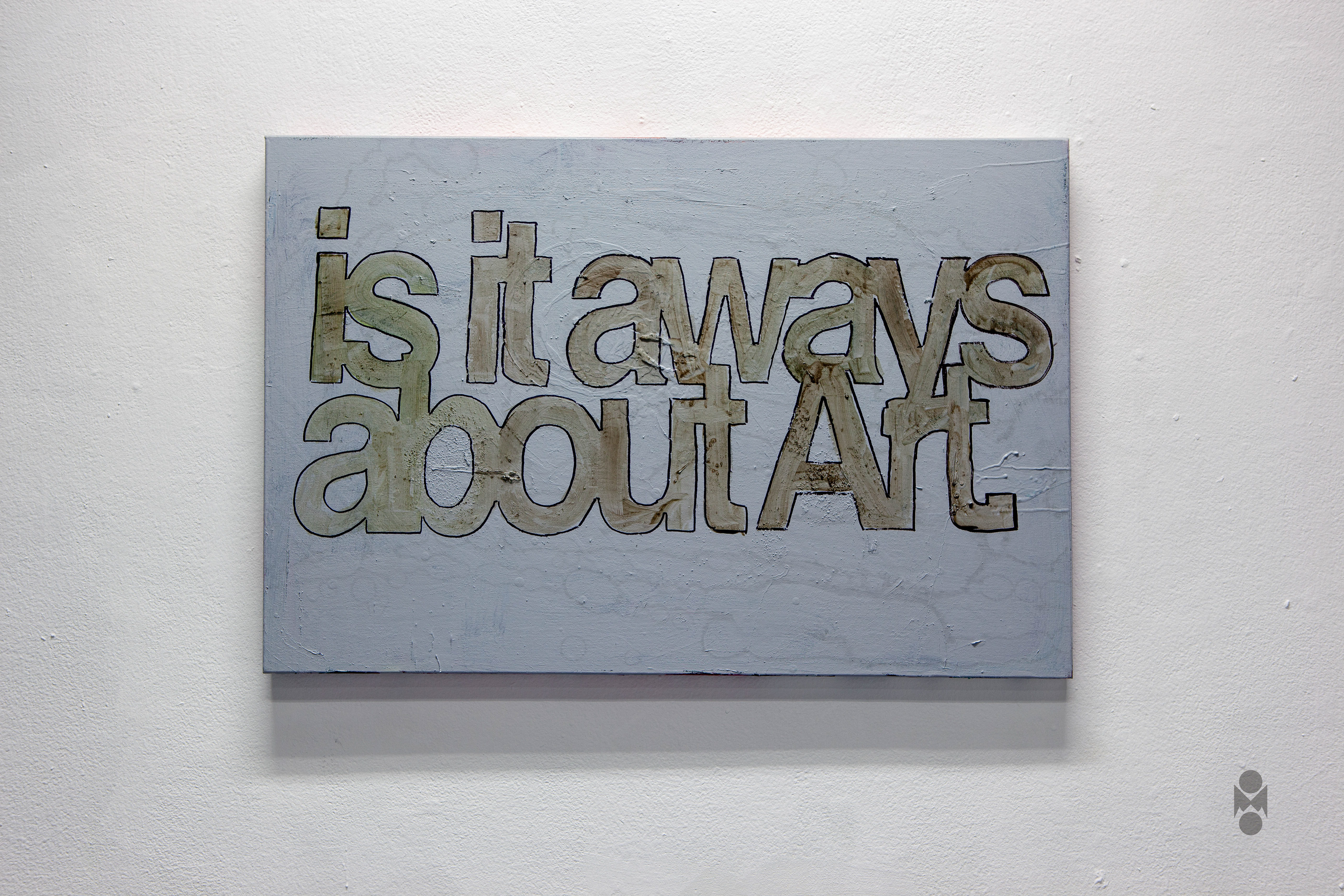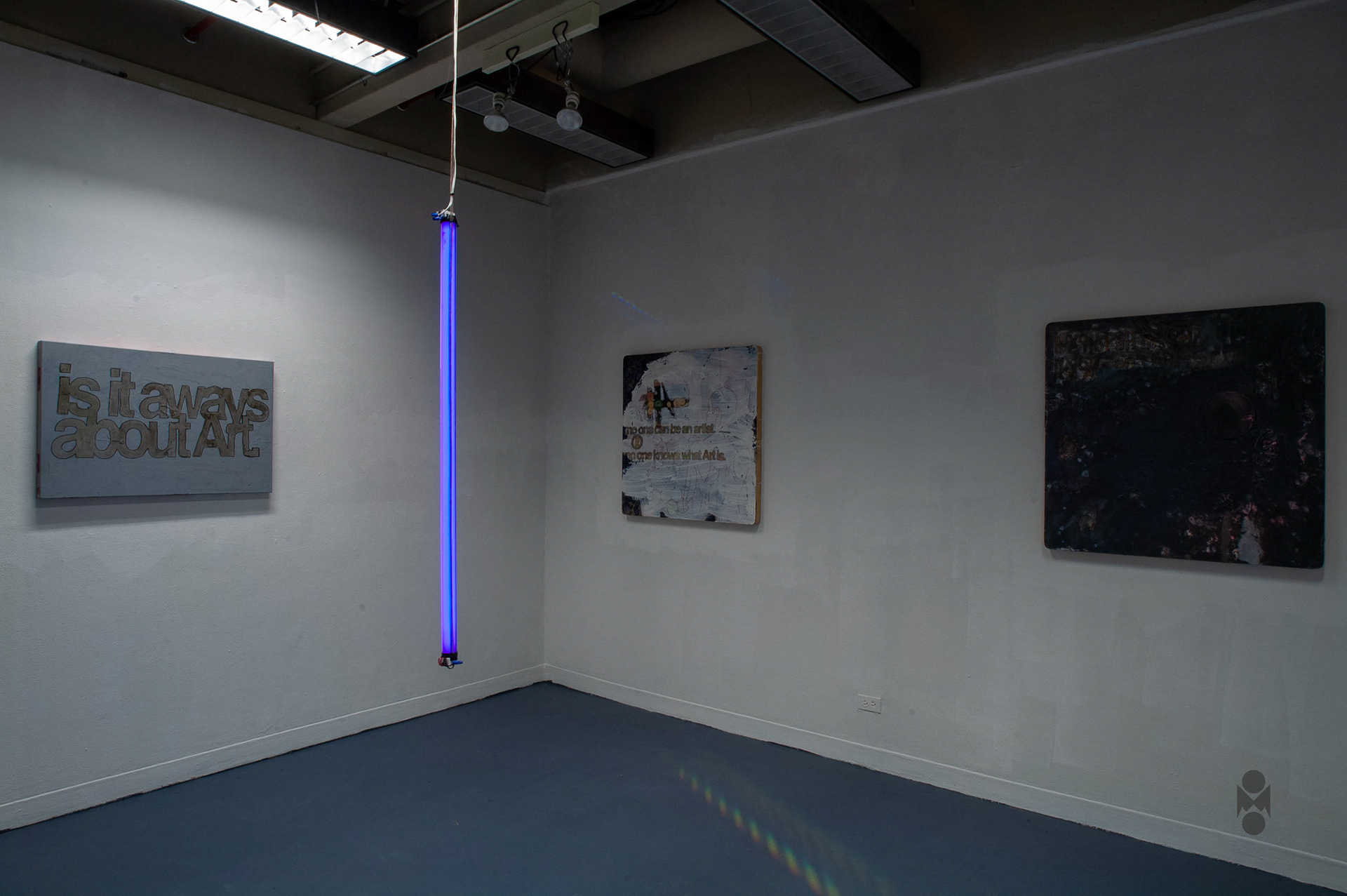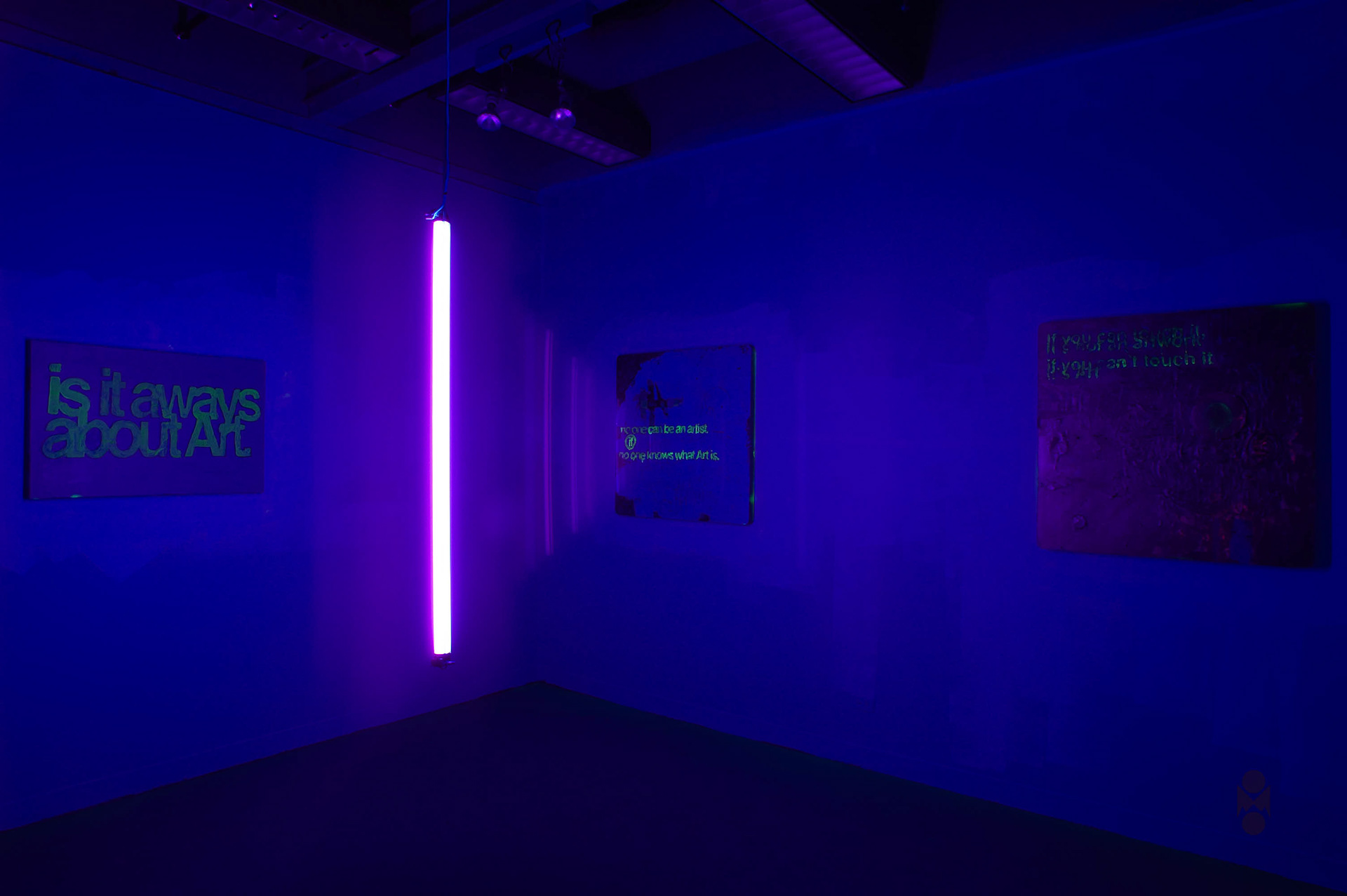This series of works engages with the conceptual question of art's nature and meaning. The text on each piece seems to challenge traditional notions of art, incorporating statements such as "Art is complex but it's still nothing," "Art is not an object," and "No one can be an artist if no one knows what art is."
The aesthetic of these pieces combines mixed media, with visible text overlaid on backgrounds that suggest the passage of time, wear, and perhaps the residue of previous artistic gestures. The final image adds another layer by incorporating a vibrant light element, possibly neon or UV, which adds a dramatic atmosphere to the scene. The glowing text under this light emphasizes the conceptual statement, further blurring the line between art as an object and art as an experience.
The aesthetic of these pieces combines mixed media, with visible text overlaid on backgrounds that suggest the passage of time, wear, and perhaps the residue of previous artistic gestures. The final image adds another layer by incorporating a vibrant light element, possibly neon or UV, which adds a dramatic atmosphere to the scene. The glowing text under this light emphasizes the conceptual statement, further blurring the line between art as an object and art as an experience.
This entire series pushes back against traditional art materials and techniques. By using grey primer, glow-in-the-dark paint, and Sharpie pens on canvas—a deliberate rejection of conventional art supplies—I was attempting to strip the work down to its barest essence. The use of these materials, combined with the fluorescent black light, reflects my own crisis of faith in art-making. The series embodies my refusal to focus on technical skill or materiality, instead prioritizing the intellectual and conceptual aspects of the work.


"This is Not Art"
This piece acts as a declaration and a confrontation. The phrase "This is Not Art" challenges the viewer to question the nature of art itself. Is art defined by the physical object, or by the ideas and conversations it provokes? By labeling the work as "not art," I'm drawing attention to the concept that the object in front of us is merely a remnant of the art that has already occurred. It questions the extrinsic value we assign to objects, forcing us to reconsider where the true essence of art lies.


"Is it Always About Art?"
This piece embodies the tension between intention and interpretation. The question posedasks us to reflect on our obsession with labeling and categorizing creative works. It challenges the viewer to explore whether everything must be framed within the confines of "art" to be considered meaningful. I aimed to provoke dialogue around the boundaries of art and whether the label itself limits or enhances our understanding of what we create.


"No One Can Be an Artist if No One Knows What Art Is."
This phrase plays with the paradox of identity within the art world. It highlights the nebulous nature of defining art and, consequently, who gets to be called an artist. This piece reflects my struggle during my MFA—grappling with the uncertainty of what constitutes art and how that uncertainty shapes the artist's role. The work forces viewers to confront the idea that without consensus on what art is, the identity of an artist becomes equally ambiguous.


"If You Can Touch It, It's Not Artwork. If You Can't Touch It, It's Art."
Here, I'm toying with the absurdity of some art world conventions. By juxtaposing the tangible with the intangible, this work critiques the way we often ascribe value to things based on their perceived inaccessibility. It suggests that the more distant or abstract something is, the more likely it is to be considered "art," questioning the validity of these criteria. This piece is a direct challenge to traditional hierarchies within art, asking viewers to reconsider the relationship between object and idea.


"Art is Complex, but it's Still Nothing. Art is Not an Object."
This piece tackles the paradox of art's complexity and its inherent intangibility. The title itself suggests that, while art can embody intricate ideas and evoke deep emotions, it remains fundamentally elusive—it is "nothing" in a physical sense. The second half of the title, "Art is Not an Object," reinforces the notion that the true value of art does not reside in its material form but in the ideas, emotions, and conversations it sparks.
In this artwork, I aimed to critique the traditional emphasis on the physicality of art objects. The glow-in-the-dark paint, grey primer, and Sharpie pens used to craft this piece on canvas further underscore the rejection of conventional art materials. The fluorescent black light interacts with the text, revealing layers of meaning that change depending on the viewer's position and perception—an allusion to the complexity of art itself. Through this piece, I invite viewers to contemplate the nature of art beyond its tangible form, challenging them to engage with the conceptual and intellectual dimensions that often go unnoticed.




This installation as a whole is meant to provoke a conversation around what qualifies as art, the role of the artist, and the value we assign to objects within the artistic process. I hope that viewers will leave questioning the very foundations of what art is and whether the act of questioning itself could be the truest form of art.
